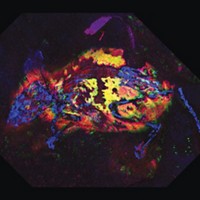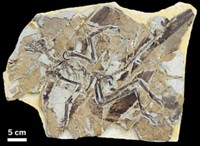Advertisement
Grab your lab coat. Let's get started
Welcome!
Welcome!
Create an account below to get 6 C&EN articles per month, receive newsletters and more - all free.
It seems this is your first time logging in online. Please enter the following information to continue.
As an ACS member you automatically get access to this site. All we need is few more details to create your reading experience.
Not you? Sign in with a different account.
Not you? Sign in with a different account.
ERROR 1
ERROR 1
ERROR 2
ERROR 2
ERROR 2
ERROR 2
ERROR 2
Password and Confirm password must match.
If you have an ACS member number, please enter it here so we can link this account to your membership. (optional)
ERROR 2
ACS values your privacy. By submitting your information, you are gaining access to C&EN and subscribing to our weekly newsletter. We use the information you provide to make your reading experience better, and we will never sell your data to third party members.
Analytical Chemistry
Crystal Caskets For Pigments
Paleochemistry: Ancient pigment extracted from 340 million-year-old crinoid fossils
by Sarah Everts
January 23, 2013

Many fossils are tinted with color, but few have had their pigments chemically analyzed. Now, researchers are reporting the oldest pigment molecules extracted from fossils of a known organism—namely, approximately 340 million-year-old fossils of marine animals called crinoids, which are related to sea cucumbers, starfish, and urchins (Geology, DOI: 10.1130/G33792.1).
The techniques used to measure the pigments could be easily applied to other tinted fossils, says Christina E. O’Malley, who did the analysis with paleontologist William I. Ausich and chemist Yu-Ping Chin, all of Ohio State University. In addition to reconstructing the color palette of ancient organisms, O’Malley hopes that organic molecules preserved in ancient fossils could help unravel phylogenetic relationships among fossilized and contemporary organisms.
Crinoid fossils can vary in color from white to brown and reddish purple, O’Malley says. After taking about a gram of sample from fossils of three crinoid species, Barycrinus rhombiferus,Cyathrocrinites iowensis, and Elegantocrinus hemiohaericus, the team identified a complex mixture of pigments that corresponded to aromatic or polyaromatic quinones.
Still found in deep marine waters today, crinoids are animals that look like “flexible stone flowers,” says Tony Dickson, a crinoid fossil expert at the University of Cambridge, who did not participate in the research. “Crinoids have a very peculiar skeleton,” which makes them amenable to pigment analysis, he adds.
The skeleton is half porous calcite and half soft tissue, which fills the calcite crystal pores. During the fossilization process, the animal’s external pores can be quickly capped, trapping the soft tissue inside, where it decomposes, leaving behind pigments. Crinoids turn into fossilized “crystal caskets” for pigments, Dickson says.
This is not the first time researchers have identified pigment residues on fossils, although it is an emerging field. For example, in 2011, paleochemists identified the feather color of ancient winged dinosaurs from 120 million-year-old fossils, some 220 million years younger than the crinoid fossils.





Join the conversation
Contact the reporter
Submit a Letter to the Editor for publication
Engage with us on Twitter